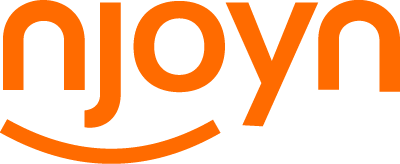
Lessons from the National Gallery
Improving communications for all recruiting stakeholders
Maintaining cordial relationships with job candidates matters to the National Gallery of Canada.
Bernardo Gallo, a human resources advisor with the Gallery, offers an example. “When we interview many applicants, only one gets an offer. At the end of the process, an email goes out to all applicants we met with thanking them for their efforts in applying for the position, with the right wording explaining that the position went to a candidate who more closely met requirements.”
Writing and sending these messages using traditional tools is a clumsy process at best. Copying and pasting, then sending messages one at a time, is time-consuming.
That’s why the Gallery uses message templates in Njoyn, its talent acquisition system. Users can select from a variety of pre-saved message templates for this scenario, then send the message to the group of applicants.
“We built multiple templates in Njoyn,” Gallo notes. These include:
- Acknowledgement of receipt of an application. (“We received your message. Thank you for your interest in the Gallery.”)
- Interview invitations. (If we schedule ten people for an interview, we will send one email to all ten applicants and the clients.)
- Language testing email
- Phone interview as pre-interview
- Interview confirmations and alerts (one set of templates for the client, another for the job candidate)
When it comes to message templates, “Njoyn has no limit,” Gallo says.
Enhancing communication templates
Candidates receive more than text in the emails the Gallery sends them. They may also get attachments, like security clearance forms and employment equity questionnaires, that the Gallery needs them to complete and return.
Attaching documents to each message can be unnecessarily onerous. Njoyn reduces the work involved when sending forms, since it allows recruiters to store blank forms right in Njoyn. Recruiters benefit from easy access to the documents and eliminate time spent searching for forms.
Gallo describes the process: “You select candidates,” he says. “You choose the forms you want to send them. They all get email with the forms attached.”
Njoyn facilitates the process further by accepting all commonly used electronic formats, including Microsoft® Office file types, rich text and Adobe® PDF.
Prescreening without the time burden
Prescreening candidates may better the recruiting process, but not all recruiters prescreen applicants.
Why don’t all recruiters prescreen candidates?
Organizations have historically faced a difficult choice:
- Use valuable staff time to pre-screen applicants so only qualified candidates receive interviews.
- Forego the pre-screening process and risk wasting the hiring manager’s time should they interview unqualified candidates.
“In the past, you had to print every résumé, read each résumé one by one to get the answers to these questions. Can you imagine going through 100 résumés, using a marker to highlight the requirements you find?”
Solving the pre-screening dilemma
Njoyn, a leading cloud applicant tracking system, offers a third choice: have applicants complete a pre-screening questionnaire as part of their applications.
The pre-screening questionnaire saves recruiters time by asking candidates questions at the point of application that would normally be asked during a pre-screening interview. Making these questions mandatory ensures candidates provide the information requested.
“When we create a job posting,” Gallo says, “we can ask people:
- Are you legally entitled to work in Canada? Yes/No
- Please identify how many years of experience you have with the Microsoft Office suite: 3 years, 5 years, 6+ years, None
“Based on the answers people provide, Njoyn does the prescreening. And instead of reviewing 100 résumés, we then only need to look at those who meet the basic requirements and that were ‘screened in’ by Njoyn. The ones who were screened out are put in a separate pile.”
“It saves a lot of time. Prescreening saves me at least an hour, often more, depending on the number of résumés.”
“It also saves time for the client,” Gallo continues. HR performs and validates the prescreening, then “We send the résumés to our clients along with the prescreening questionnaire so they can validate it.”
“Applicants prescreen for you,” Gallo sums up. “That’s useful.”
Search
Most Popular Posts
150 Commerce Valley Drive West. Markham, ON. L3T 7Z3. Tel: +1 416 553 6756
